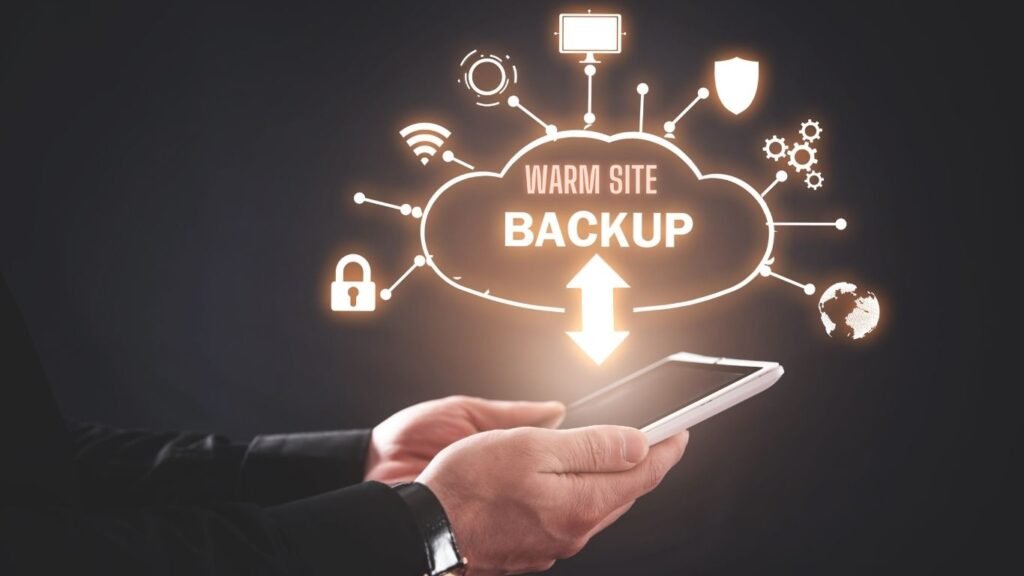Warm site backup is your first line of defense against IT disasters, outages, and unexpected interruptions. With digital threats and natural disasters always looming, every organization needs a way to restore operations quickly without draining the budget. A warm site backup acts as a ready-to-go backup office, already equipped with essential hardware, network resources, and pre-installed software. It isn’t fully powered on like a hot site, yet it’s far more prepared than an empty cold site. By making warm site backup part of your disaster recovery and business continuity plan, you set yourself up for faster recovery and fewer headaches, keeping your customers and teams happy and connected.
What Causes the Need for Warm Site Backup?
Business disruptions can come from various sources. Cyber-attacks, power outages, hardware failures, and even floods or fires can instantly put your main office or data center out of commission. These incidents underline the importance of contingency planning and highlight why a warm site backup is essential. Compliance regulations in sectors like finance, government, and healthcare also drive the demand for reliable backup solutions. As cyber threats and ransomware attacks become more common, warm site backup provides a balanced solution for resuming operations swiftly and securely.
Benefits
There are plenty of advantages to implementing a warm site backup. The biggest benefit is cost-effectiveness you don’t pay the high price for full-time operation as with a hot site, but you avoid the delays and risks of building from scratch like with a cold site. This approach ensures a moderate recovery time and gives you flexibility on what to recover first. Warm site backup also helps with compliance, protects sensitive data, and supports both disaster recovery and business continuity. Testing disaster scenarios becomes simpler since basic resources are always in place. By investing in a warm site backup, your company can minimize downtime, prevent data loss, and maintain customer trust even when the unexpected strikes.
Step-by-Step Guide: How to Set Up a Warm Site Backup
Setting up a warm site backup requires thoughtful planning and precise execution. Here’s a straightforward step-by-step process to help you build and maintain an effective warm site for disaster recovery:
- 1. Assess Your Business Needs: Start by evaluating which systems, applications, and data are mission-critical. Not every process needs instant recovery—prioritize what protects your operations and customer experience.
- 2. Choose a Secure Location; Select a data center or office in a different geographic area to reduce the risk that the same event affects both sites. Verify the site’s security measures and network connections.
- 3. Install Essential Hardware and Software: Set up servers, storage devices, networking equipment, and install software necessary for core operations. Unlike a cold site, you want this equipment partially powered and tested.
- 4. Configure Periodic Data Backups: Establish schedules for regular backups or data replication to the warm site, using reliable backup software or cloud disaster recovery services for updated protection.
- 5. Test Recovery Procedures: Run disaster recovery drills to verify your team can restore data and systems efficiently. Identify bottlenecks, improve configurations, and keep documentation up to date.
- 6. Update and Maintain the Site: Regularly review the infrastructure, software patches, and data backups at your warm site backup. Make sure your processes adapt as your primary operations evolve.
How Warm Site Backup Works

At its core, a warm site backup keeps your most crucial digital assets and systems almost ready for use. Periodically updated with recent copies of essential business data and partially configured systems, a warm site stands by for activation. It’s far enough from your primary location to avoid simultaneous disasters and is maintained with the right servers, databases, and applications. In the event of a crisis, IT staff travel to the warm site or connect remotely to restore the latest backups and reconfigure systems. The activation usually takes hours or a couple of days much quicker than building from scratch and far less expensive than maintaining full-time duplicates.
Warm Site Backup vs. Cold Site vs. Hot Site
Understanding the differences between backup options is crucial. A warm site backup provides a middle ground in terms of cost, speed, and readiness. A cold site is just a physical space, with nothing but electricity and maybe some cooling systems—setup takes days or even weeks. A hot site, conversely, is a mirror image of your main site with live, real-time data syncing and instant switch-over but at a steep recurring cost. By comparison, warm site backup means your business can tolerate a little downtime without compromising on essential protection or overspending. This hybrid approach suits many organizations aiming for resilience and budget control.
Use Cases
A warm site backup is perfect for businesses of all sizes that need a reliable, affordable way to maintain business continuity. Financial institutions often use warm site backup to align with compliance while controlling spending. Government agencies, healthcare providers, and educational organizations rely on warm sites to recover quickly from outages or cyberattacks without demanding real-time duplication. Organizations with hybrid environments (mix of on-premise and cloud) or specialized applications use warm site backup to safeguard their most critical assets. Even small businesses can benefit, as warm site backup allows them to recover swiftly after regional disasters, supply chain disruptions, or system failures.
Best Practices for Warm Site Backup
To get the most out of your warm site backup, follow industry-proven best practices. Review and improve your disaster recovery plan regularly. Test your backup and failover methods at least once a year to ensure everyone knows their role. Maintain clear communication with service providers, and automate as many steps as possible to speed up recovery times. Keep backup infrastructure updated and well-documented to avoid last-minute problems. Always evaluate your business’s changing needs so your warm site backup grows along with your operations.
Final Thoughts
A well-designed warm backup gives your organization the confidence to face interruptions, ransomware, and disasters head-on. By investing in this versatile and practical disaster recovery tool, you’ll reduce downtime, safeguard your reputation, and meet compliance standards without resorting to expensive, always-on solutions. Use the step-by-step guide to build a warm site backup that fits your needs, and revisit your strategy regularly to stay a step ahead of the unexpected. Whether you’re running a global company or a local shop, warm site backup can help you bounce back faster and keep your business moving forward.
Thanks for visiting budgethackscwbiancamarket.com. Don’t forget to share it on Twitter.

